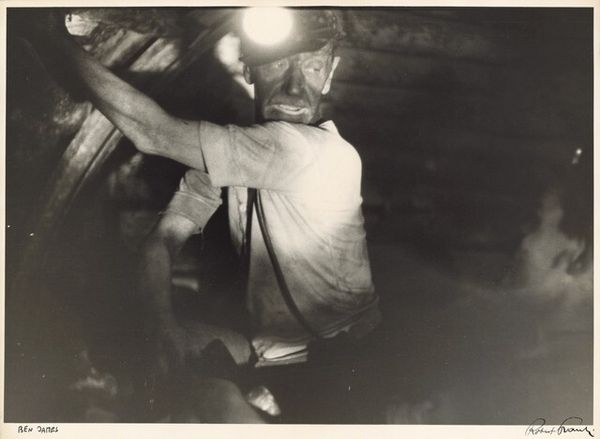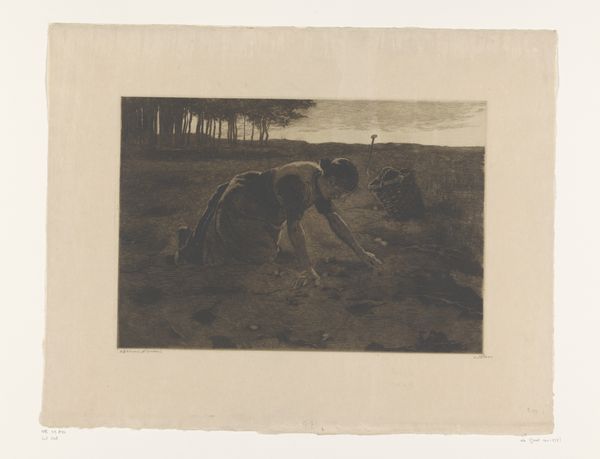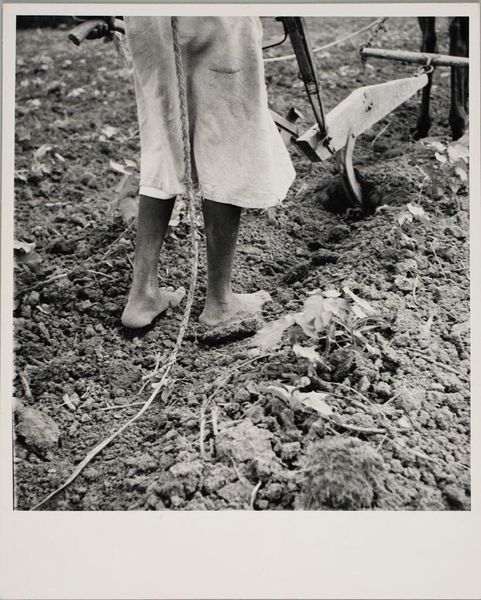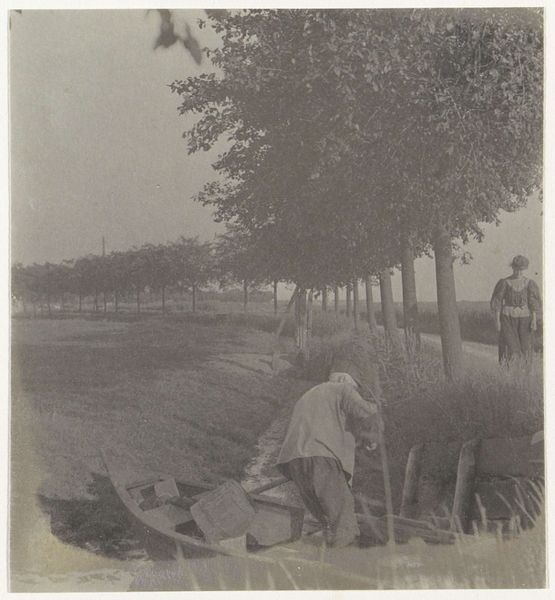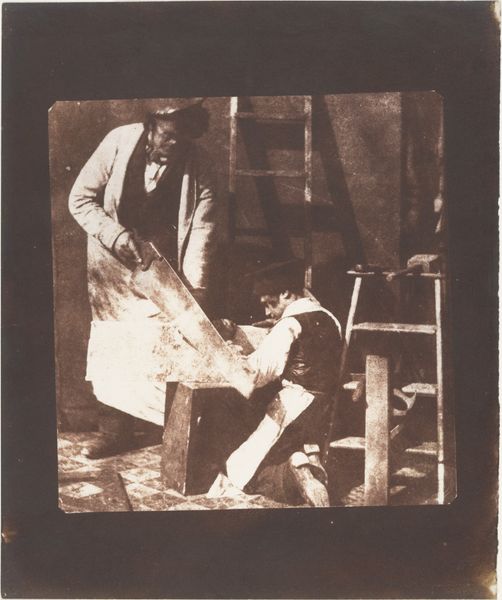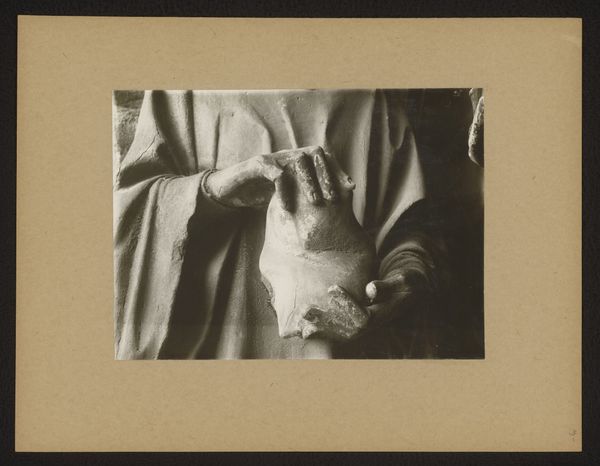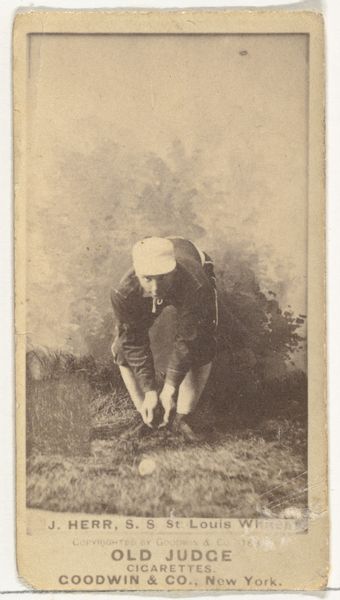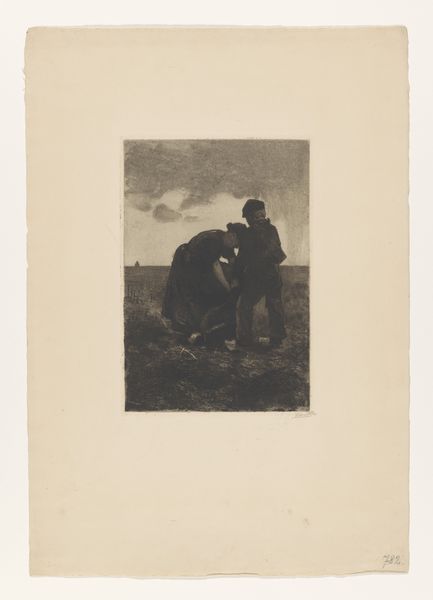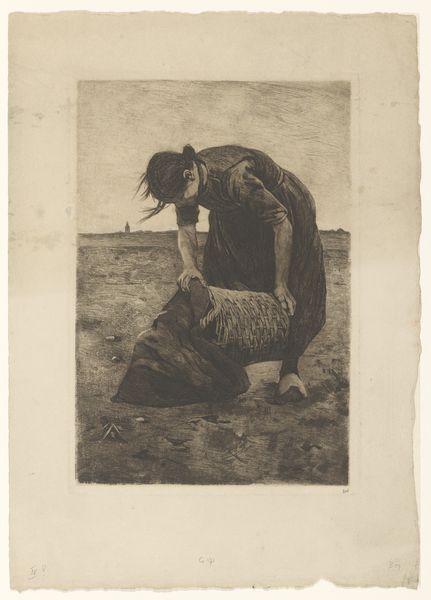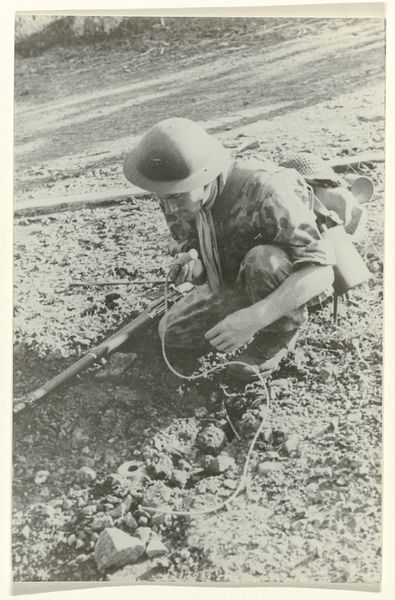
Dimensions: image: 450 x 685 mm support: 540 x 690 mm
Copyright: © Tacita Dean, courtesy Frith Street Gallery, London and Marian Goodman Gallery, New York/Paris | CC-BY-NC-ND 4.0 DEED, Photo: Tate
Curator: This is Tacita Dean's "The Life and Death of St Bruno," currently held in the Tate Collections. The photographic image measures 450 by 685 millimeters. Editor: It strikes me immediately as quite somber. The limited grayscale palette and the hunched figures evoke a sense of solemn ritual. Curator: Indeed. The image depicts monks burying one of their brothers. Note also the handwritten text layered onto the photograph itself. Editor: A palimpsest, then, where layers of meaning intertwine. The added text disrupts the stillness of the photograph, almost like a stream of consciousness. Curator: The repeated motif of burial and remembrance resonates deeply within Western cultural memory and Christian symbolism. This image touches upon universal themes of mortality. Editor: Yes, and the composition—the stark contrast between the dark earth and the white robes—reinforces the fundamental dichotomy of life and death. Curator: The photograph is also inscribed at the bottom with a script of sorts. It might be another dimension of the artwork waiting to be unpacked. Editor: It's a powerful piece, prompting contemplation on the transient nature of existence and the enduring power of ritual.
Comments
tate 6 months ago
⋮
http://www.tate.org.uk/art/artworks/dean-the-life-and-death-of-st-bruno-p20260
Join the conversation
Join millions of artists and users on Artera today and experience the ultimate creative platform.
tate 6 months ago
⋮
The Life and Death of St Bruno belongs to a portfolio of twenty black and white photogravures with etching collectively entitled The Russian Ending. The portfolio was printed by Niels Borch Jensen, Copenhagen and published by Peter Blum Editions, New York in an edition of thirty-five; Tate’s copy is the fifth of ten artist’s proofs. Each image in the portfolio is derived from a postcard collected by the artist in her visits to European flea markets. Most of the images depict accidents and disasters, both man-made and natural. Superimposed on each image are white handwritten notes in the style of film directions with instructions for lighting, sound and camera movements, suggesting that the each picture is the working note for a film. The title of the series is taken from a convention in the early years of the Danish film industry when each film was produced in two versions, one with a happy ending for the American market, the other with a tragic ending for Russian audiences. Dean’s interventions encourage viewers to formulate narratives leading up to the tragic denouements in the prints, engaging and implicating the audience in the creative process.

